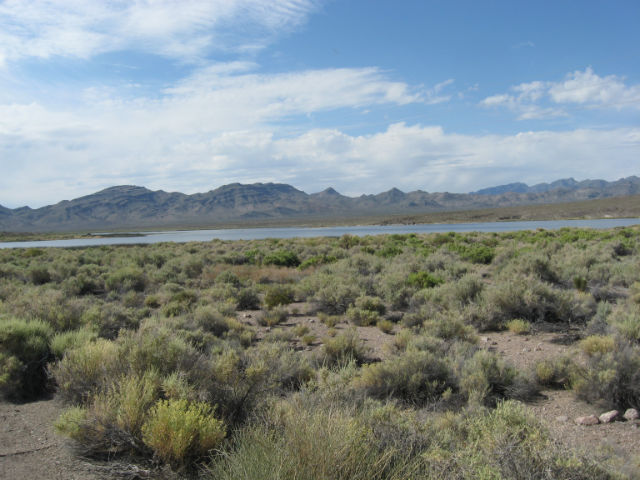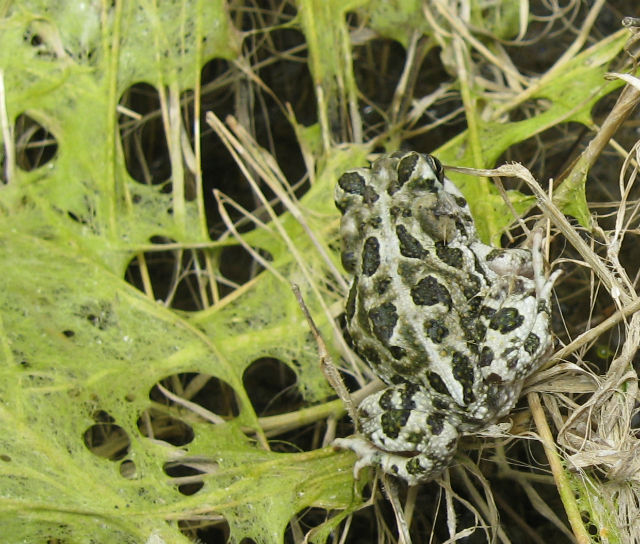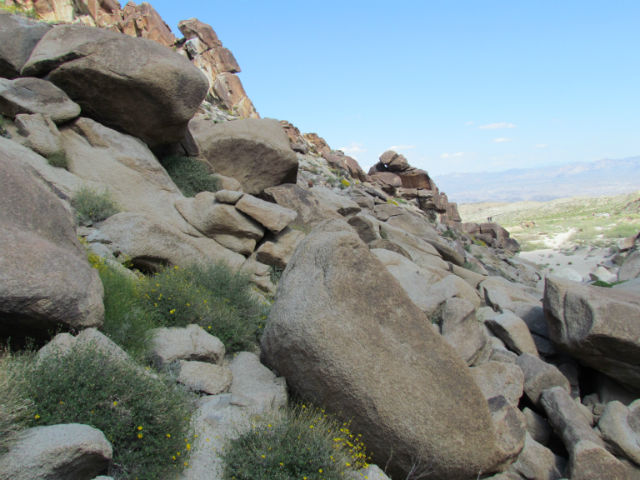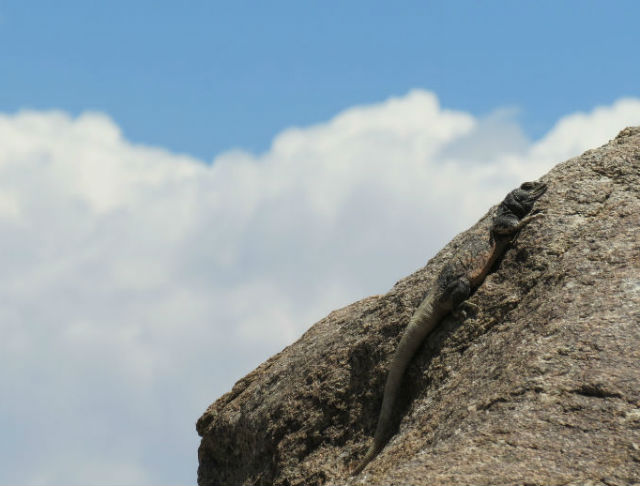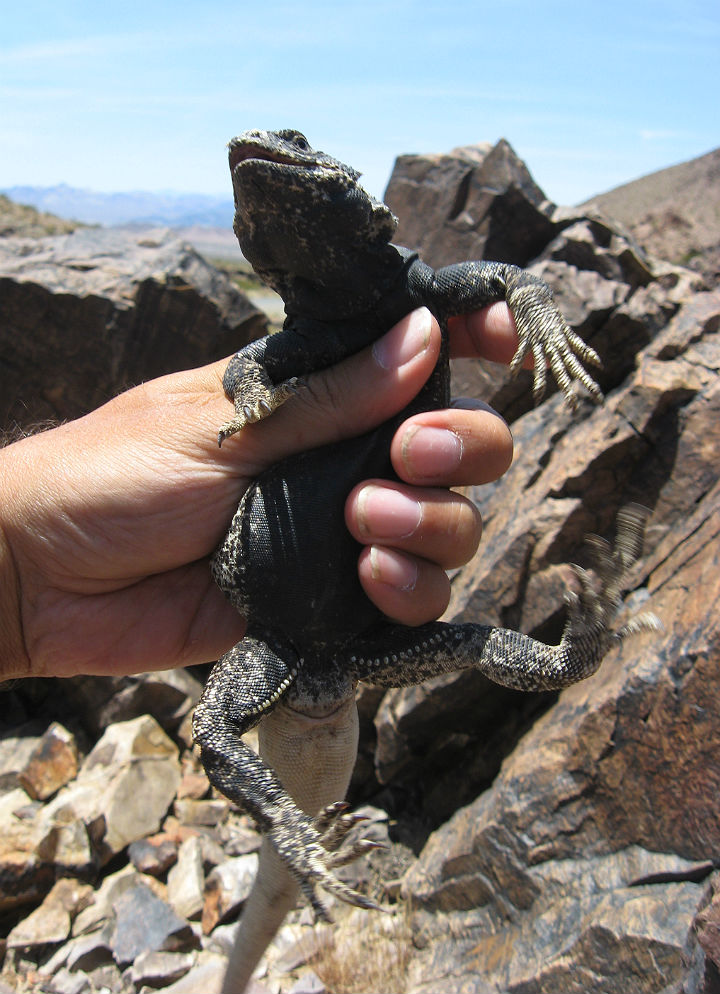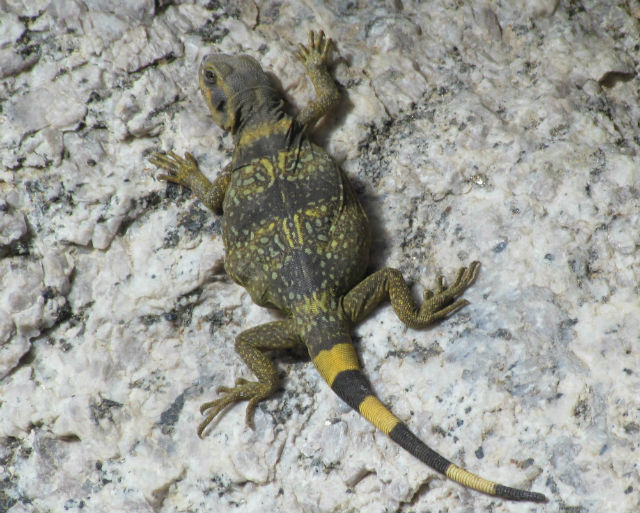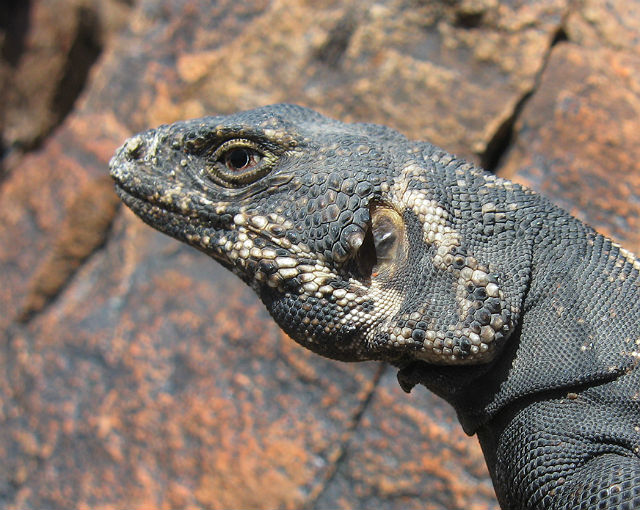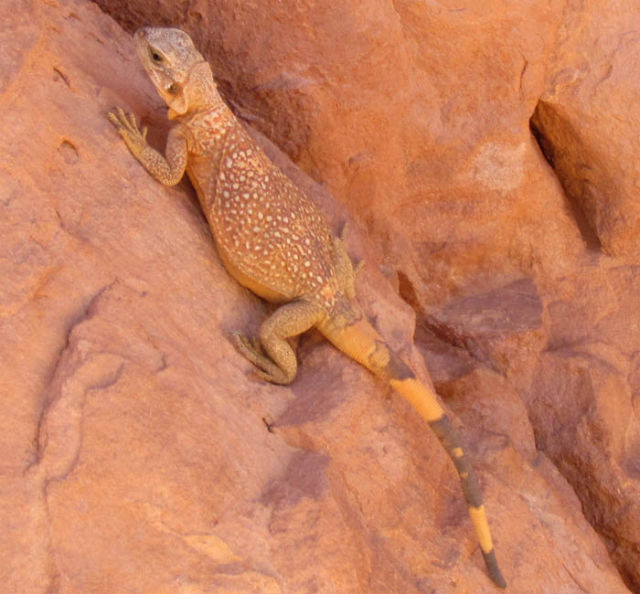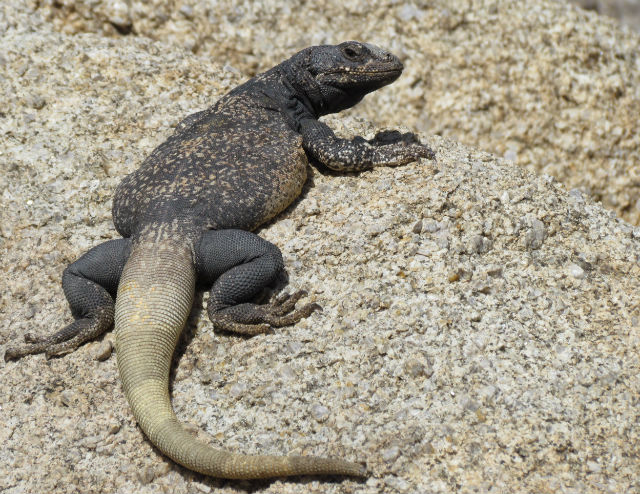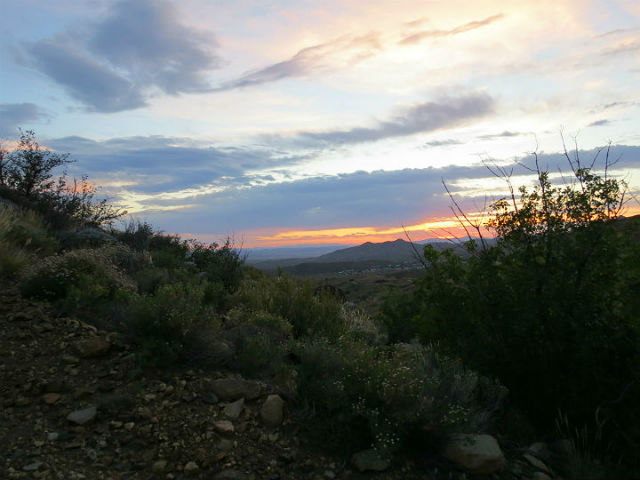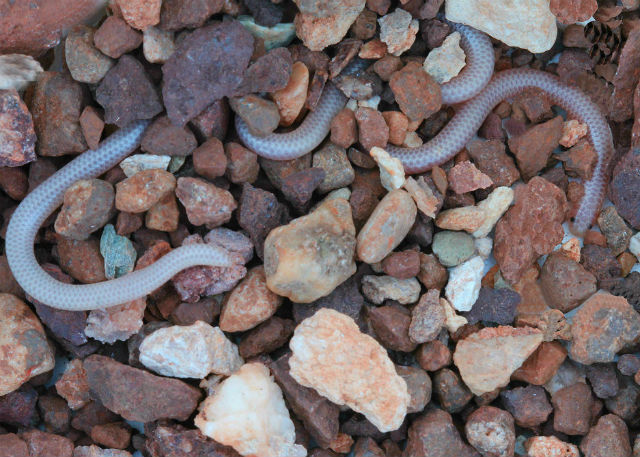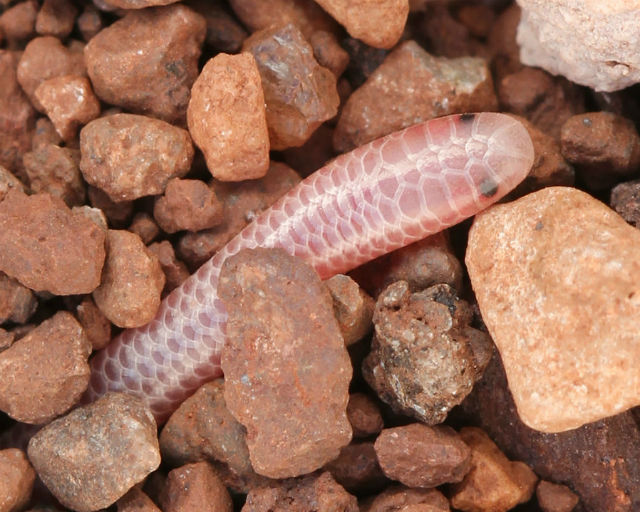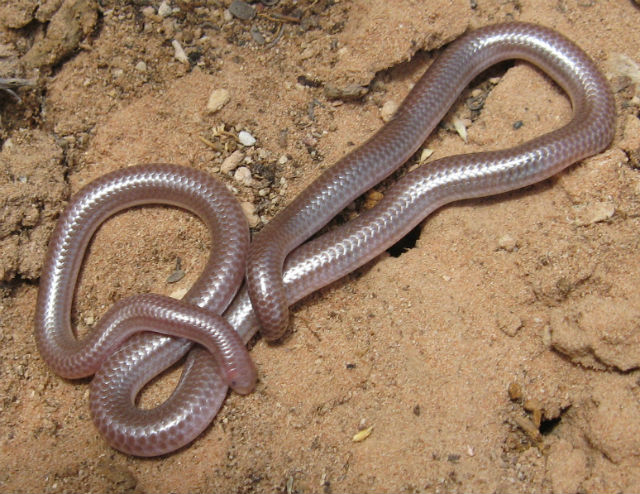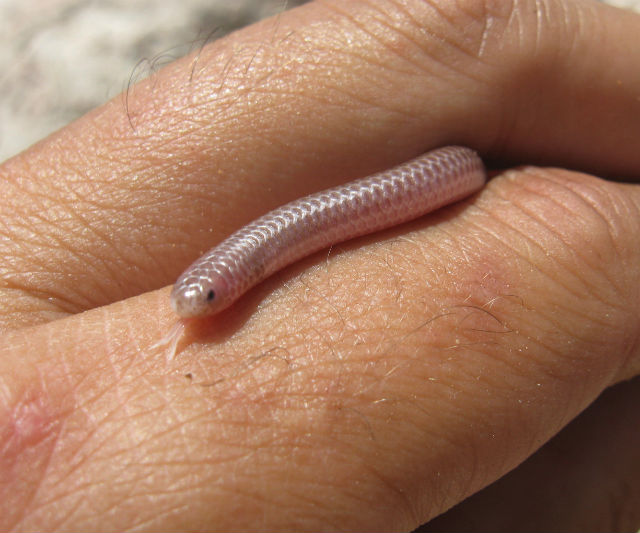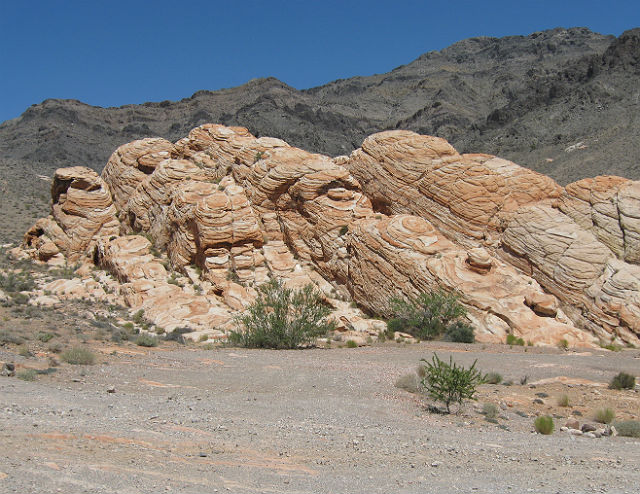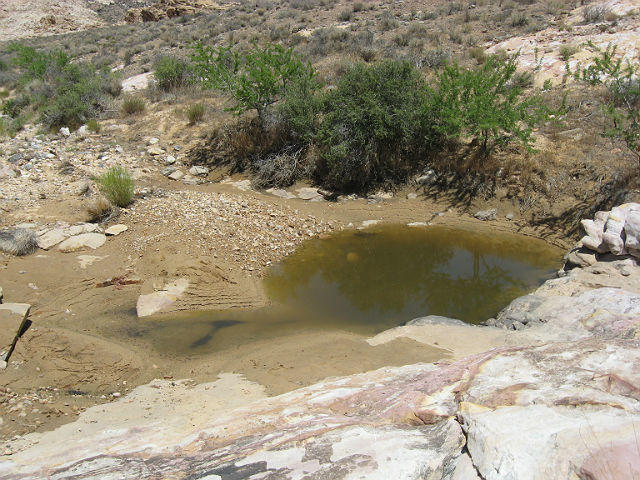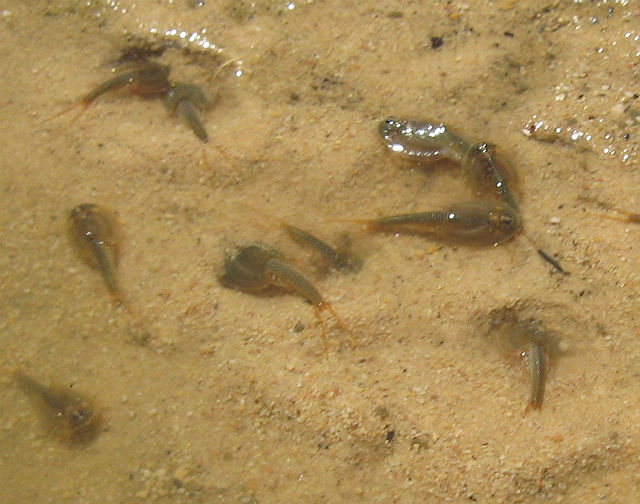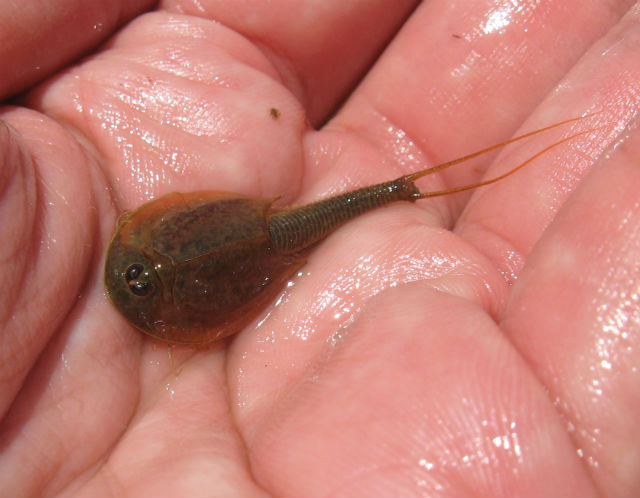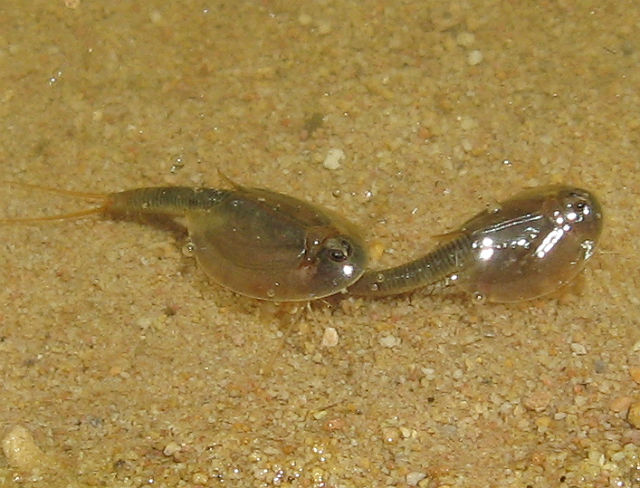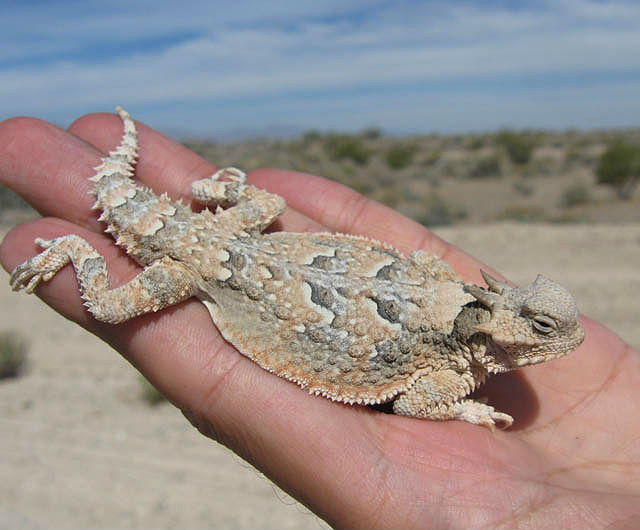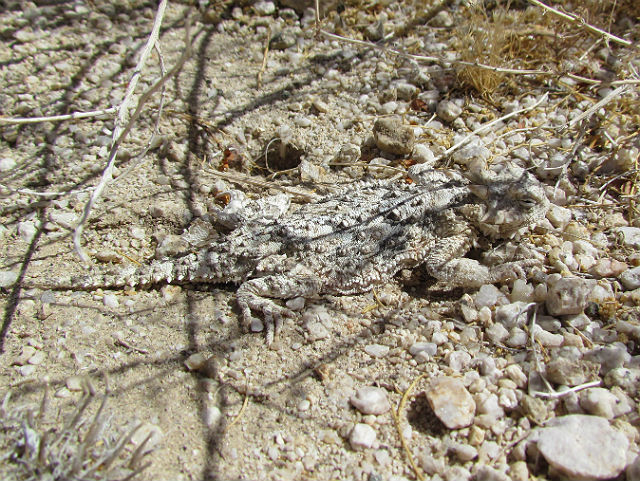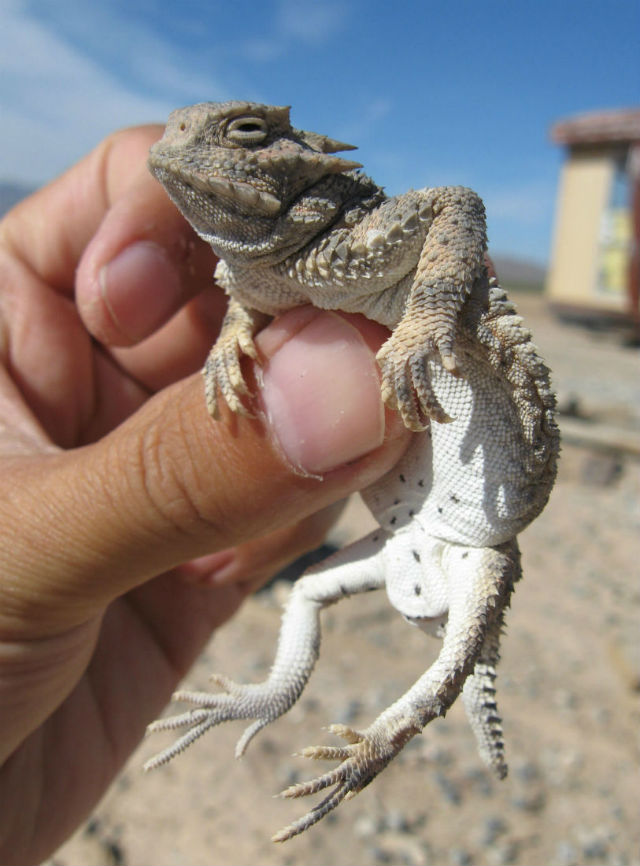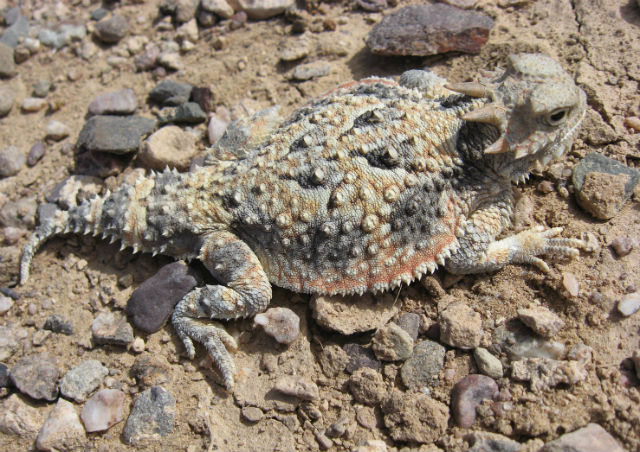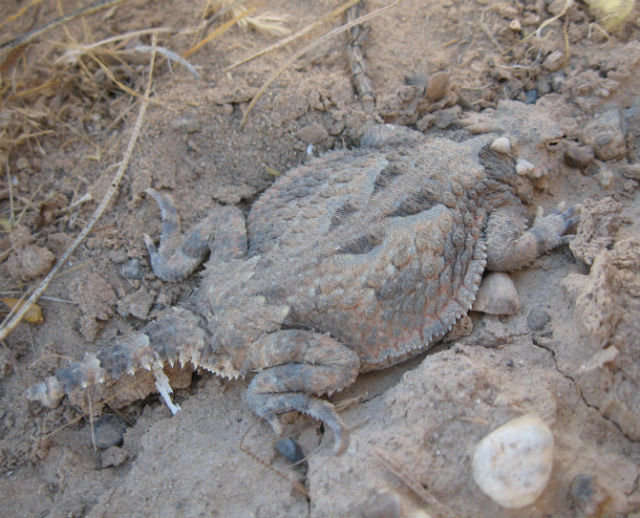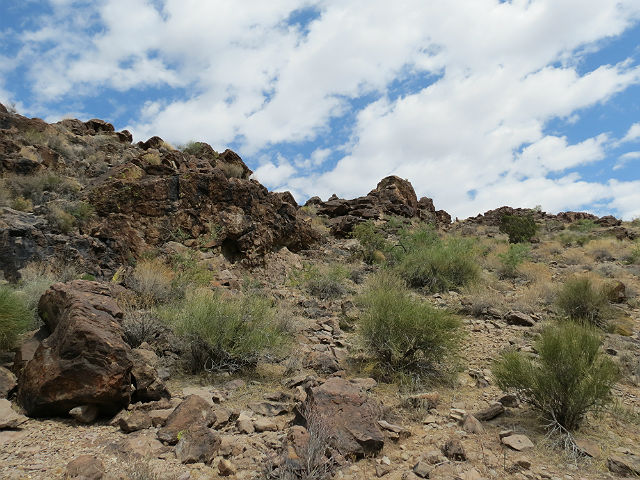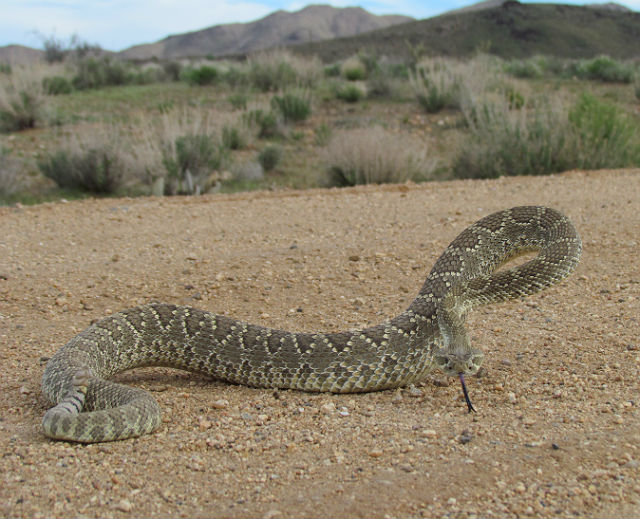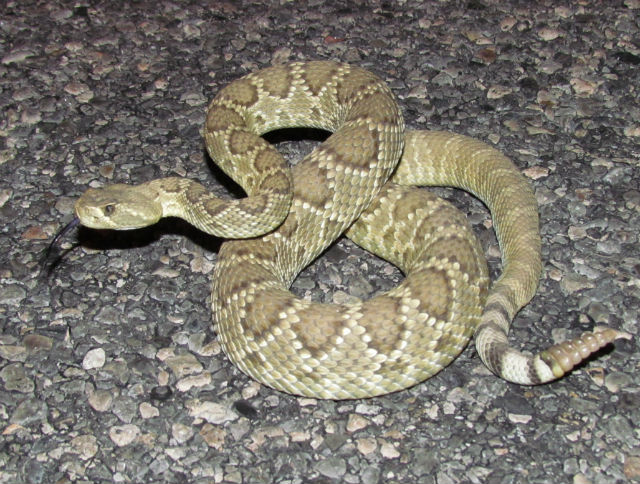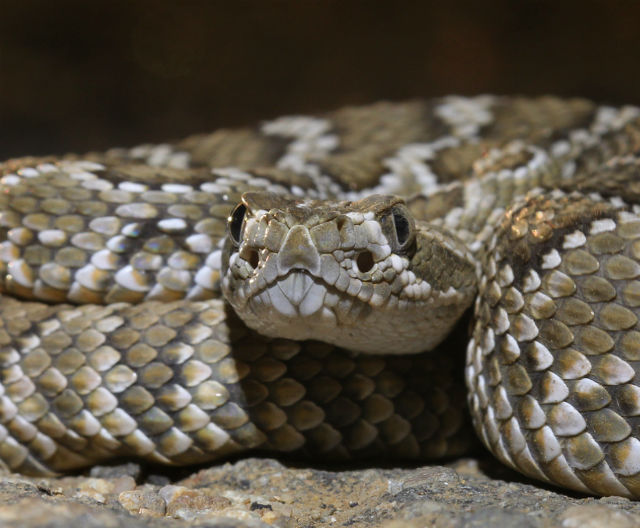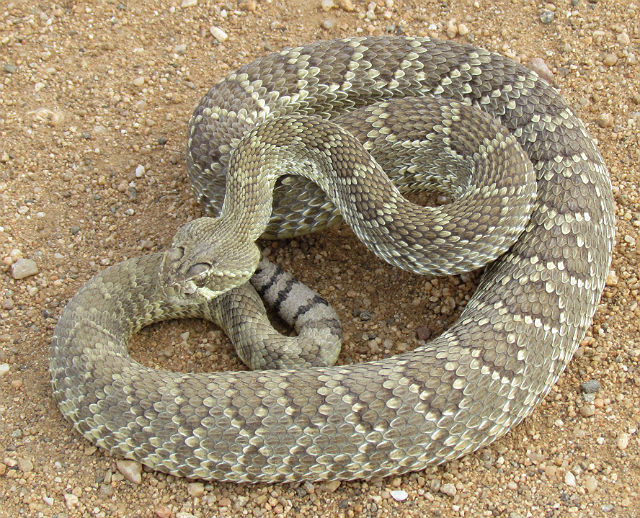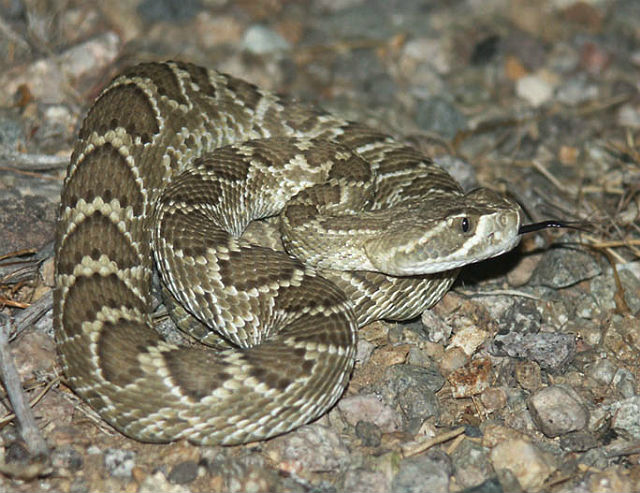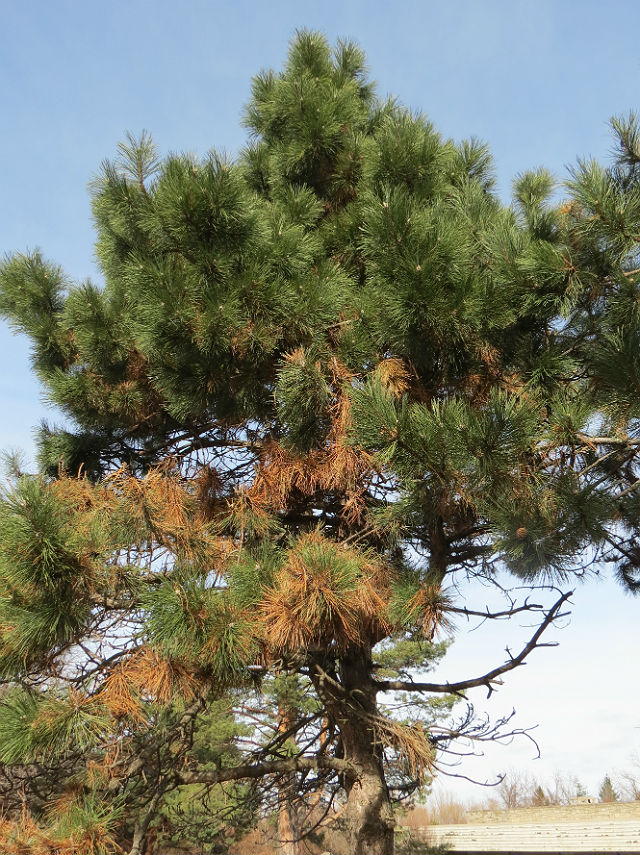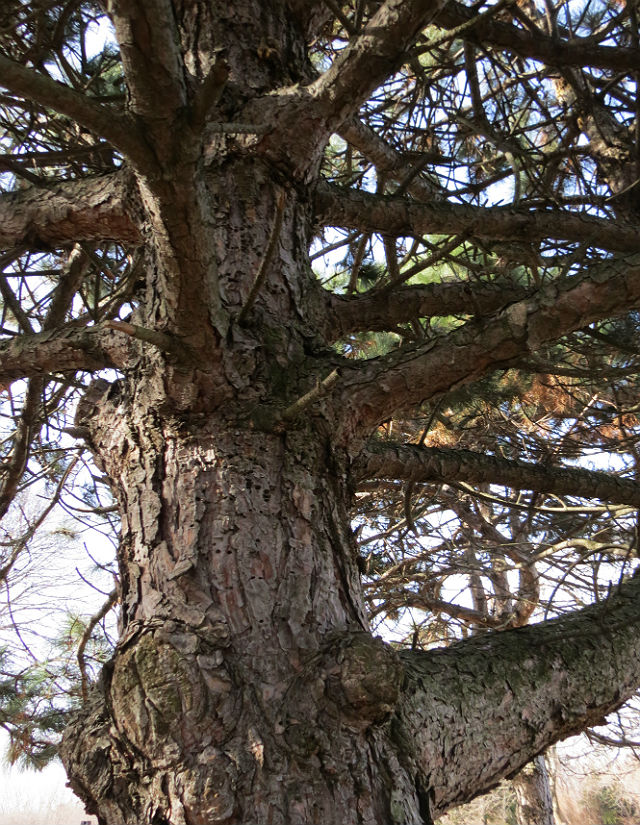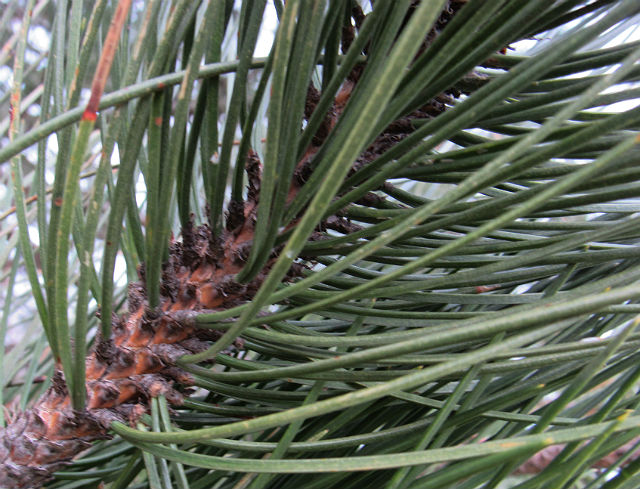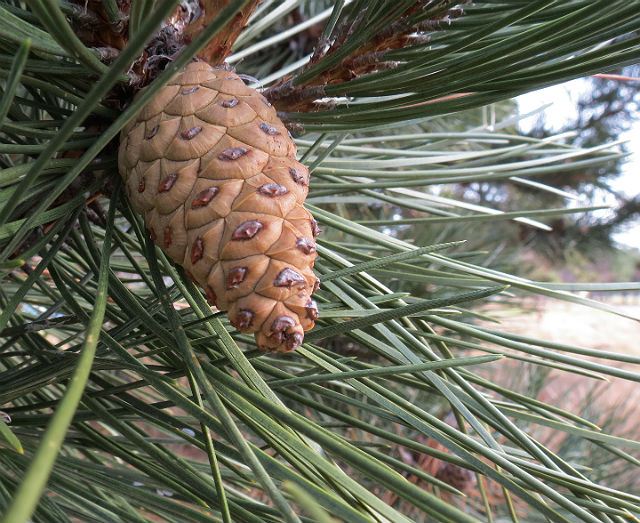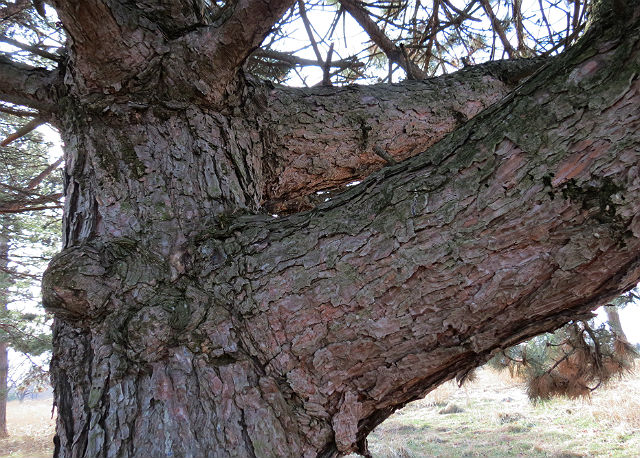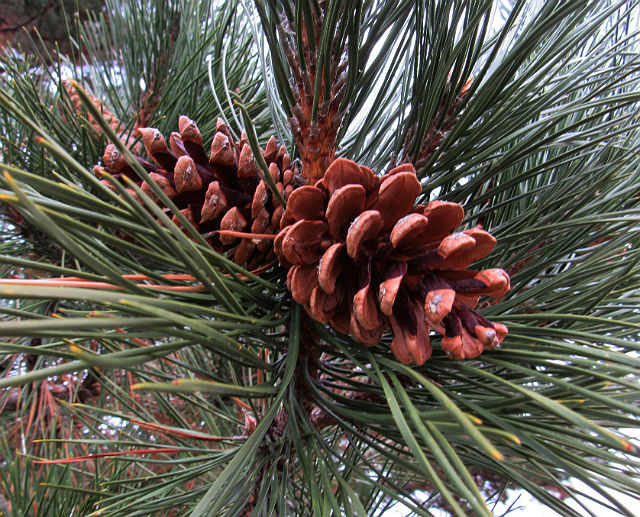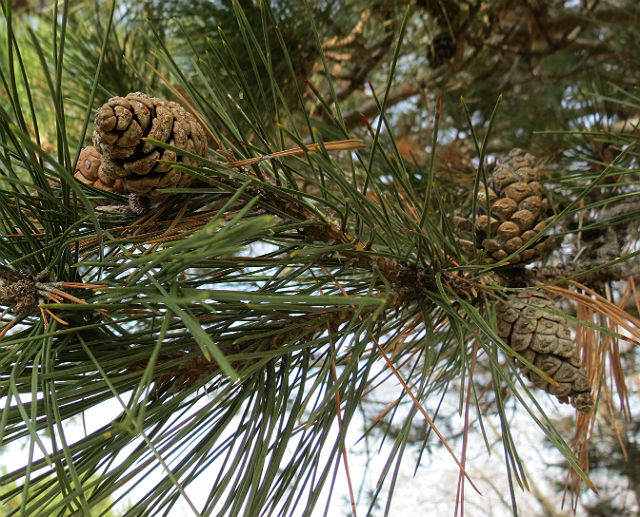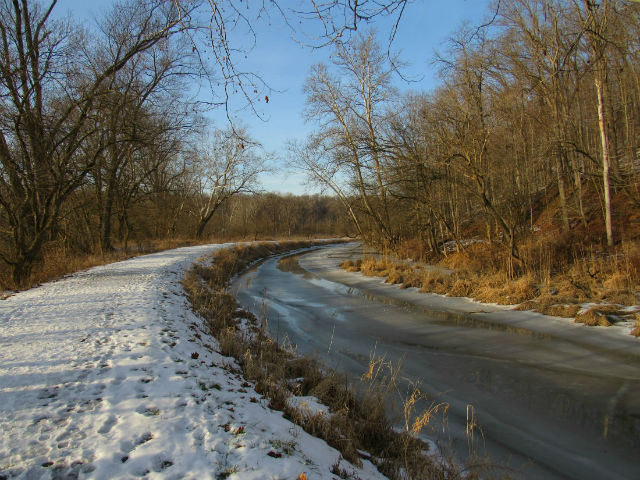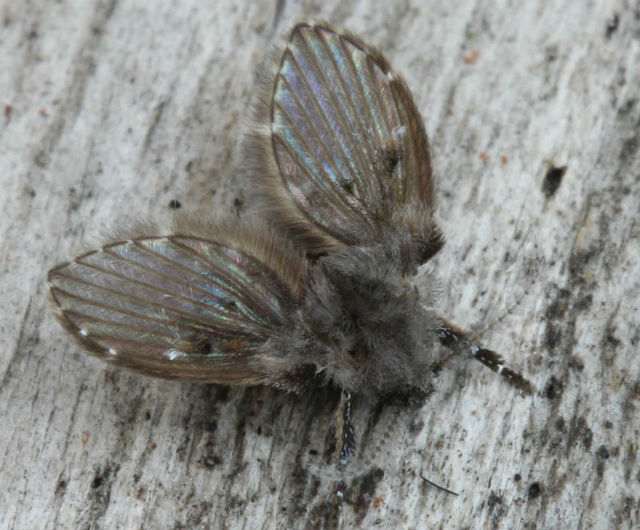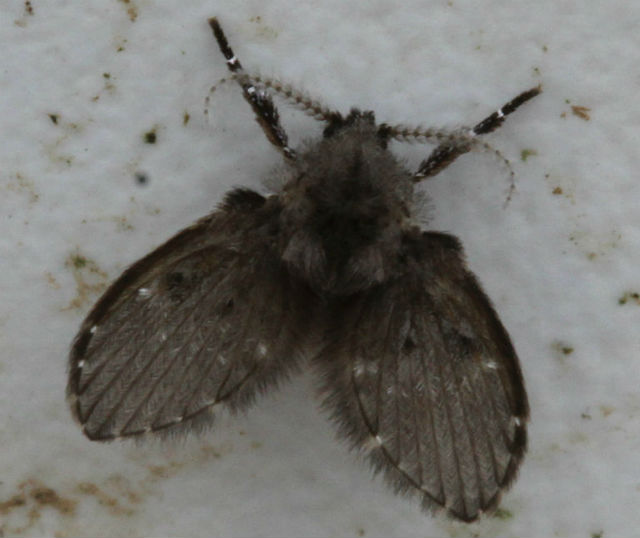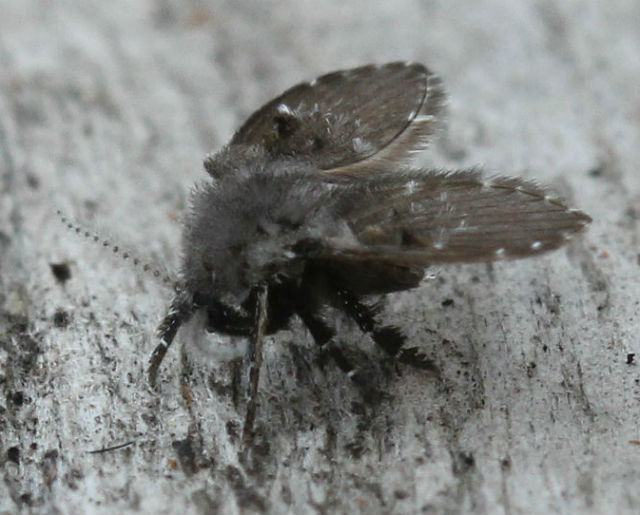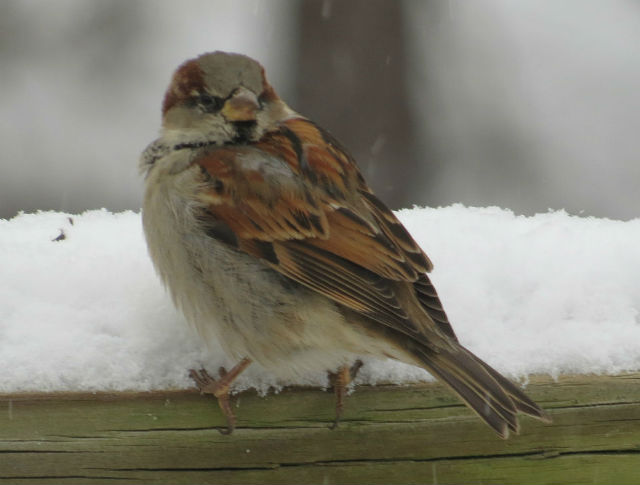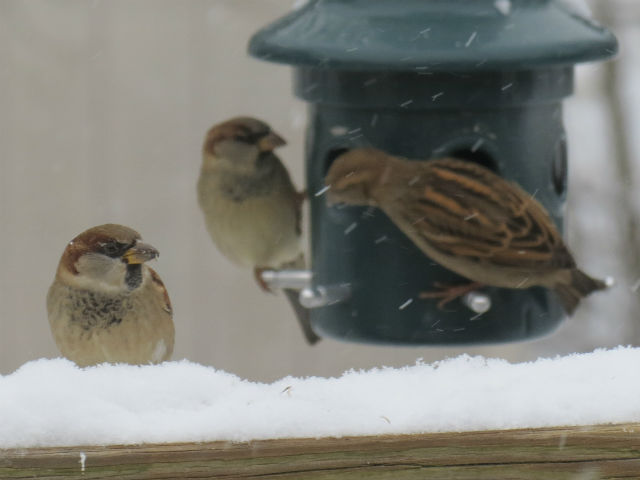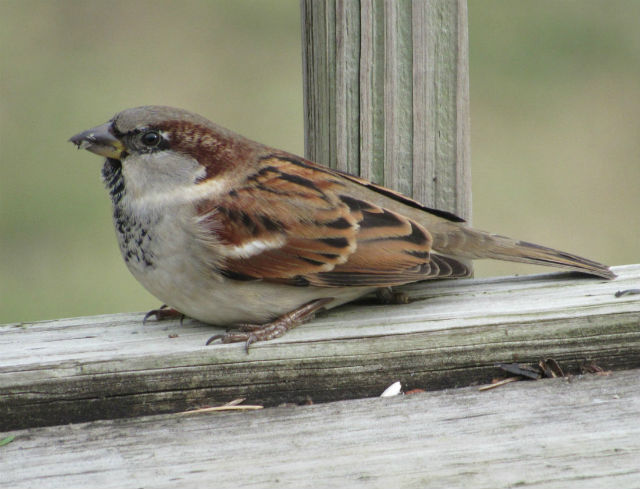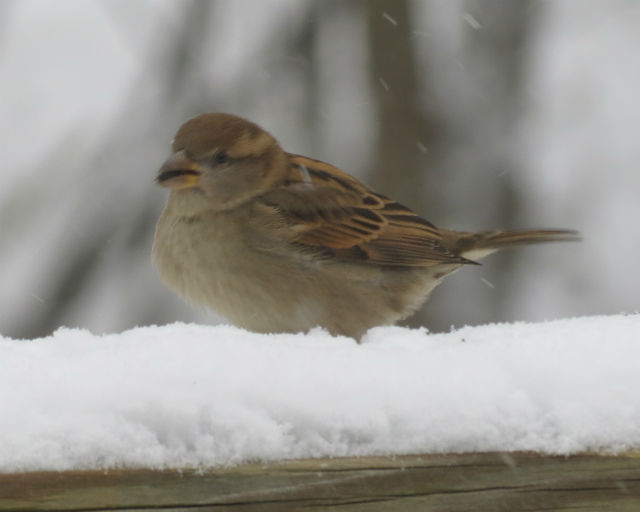While visiting Pahranagat National Wildlife Refuge in the Mojave Desert, I heard explosive jackhammer-like metallic trills that lasted almost a minute. I decided to investigate.
Located in a region of Southern Nevada which receives only about 6-1/2 inches of rain per year, the refuge’s lakes, marshes, meadows and tall Cottonwood Trees are quite a contrast to the surrounding desert; it’s like an oasis.
I eventually pinpointed where the noise was coming from and located my first ever Great Plains Toad. It was easily identified by its large, symmetrical olive blotches with light borders on a background color of gray-brown to green. It was a robust toad with dry, warty skin.
Additional looking turned up a few more. This creature occurs in deserts, grasslands, semi-desert scrublands, open floodplains, and agricultural areas. The Great Plains Toad is beneficial to farmers, as its primary diet is various species of cutworms as well as other insects.
This amphibian is widespread in the Great Plains States and the Southwestern United States. In dry areas it may only emerge from its burrow for a few weeks when conditions are right, and usually at night; but in areas with permanent water and abundant rain, it may be active all day.
The Great Plains Toad is an accomplished burrower and often remains underground in the daytime if conditions aren’t ideal for it to be out and about. It has spades on its hind feet which makes them well equipped for digging.
This amphibian is slow moving, often using a walking or crawling motion along with short hops. Like most toads in the United States, it relies on the secretion of poison from its wart-like glands to deter predators.
It was very cool to come across this unexpected amphibian while on my visit to the Silver State.

